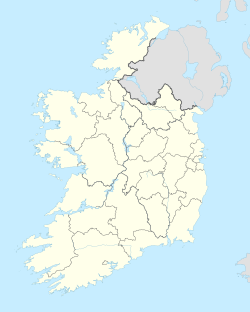Top Qs
Timeline
Chat
Perspective
Askeaton Abbey
Ruined Franciscan abbey in Limerick, Ireland From Wikipedia, the free encyclopedia
Remove ads
Askeaton Abbey or Askeaton Friary is a ruined medieval Franciscan friary located north of Askeaton, County Limerick, Ireland, on the east bank of the River Deel.[1][2][3][4]
Remove ads
History

Askeaton Abbey was founded for the Order of Friars Minor Conventual by Gerald FitzGerald, 3rd Earl of Desmond between 1389 and 1400; or by James FitzGerald, 6th Earl of Desmond in 1420.[5]
The abbey was reformed under the Order of Friars Minor in 1490; it was reformed again in 1513 and a provincial chapter held there in 1564.[6]
Askeaton was plundered and later abandoned by Nicholas Malby's men in 1579 during the Second Desmond Rebellion, and some of the friars were killed.[7] It was revived in 1627 and abandoned in 1648 when Cromwell’s forces neared. It was reestablished in 1658 and continued to house friars until 1714.[8]
In 1914, four of the "ancient" bells of the monastery were found buried beneath the friary's "front door".[9]
Remove ads
Architecture

The church and its north transept, sacristy, cloister arcade and domestic buildings survive. Notable features include the cloister with its carvings of Francis of Assisi with stigmata, a Mass dial, sedilia, several Fitzgerald dynasty tombs, and a carving of Christ as the Man of Sorrows.[5][10][11][12][13]
A sketch of the friary in the Pacata Hibernia, dated from some point prior to 1599, shows a large belfry associated with the structure, now entirely destroyed.[14]
The church is rendered in simple Gothic style and is lighted by a large window in the eastern wall. The gable and south wall are battlemented. A plain altar survives. Despite tradition attesting that the Stephenson family had removed the original altar to make a burial place beneath it, this is unlikely to be true.[15]
Remove ads
Gallery
References
Wikiwand - on
Seamless Wikipedia browsing. On steroids.
Remove ads









